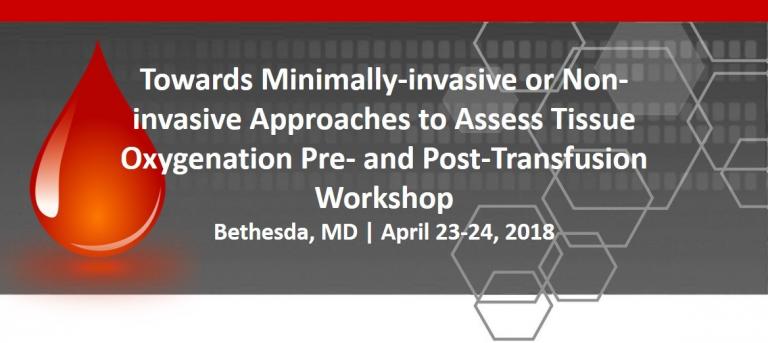
Description
This one-and-a-half day workshop brought together experts in multiple disciplines relevant to tissue oxygenation (transfusion, critical care, cardiology, neurology, neonatal/pediatrics, bioengineering, biochemistry, imaging) to present their latest findings, examine key challenges, and develop recommendations to facilitate the development of new technologies and/or biomarker panels to assess tissue oxygenation in a minimally to non-invasive fashion pre- and post-transfusion of Red Blood Cells (RBCs). The workshop was structured into four sessions: 1) Global Perspective; 2) Organ Systems; 3) Neonatology; and 4) Emerging Technologies. The first day of the workshop provided an overview of current approaches in the clinical setting, both from a global perspective including metabolomics for studying RBCs and tissue perfusion, as well as tissue oxygenation assessments in specific adult organ systems and neonates. The second day focused on emerging technologies for minimally-invasive to non-invasive assessment of tissue oxygenation with applications for pre- and post-transfusion of RBCs. Each day concluded with an open-microphone discussion among the speakers and the workshop participants. The workshop presentations and ensuing interdisciplinary discussions highlighted the potential of technologies to combine global "omics" signatures with additional measures (e.g., thenar eminence reading or imaging methods) to predict who needs a RBC transfusion and evaluate the efficacy of RBC transfusions. The discussion highlighted the need for collaborations across the various groups represented at the meeting to leverage existing technologies and develop novel approaches for assessing RBC transfusion efficacy in clinical settings.
Sponsored by:
National Heart, Lung, and Blood Institute, NIH
Office of the Assistant Secretary for Health, DHHS






